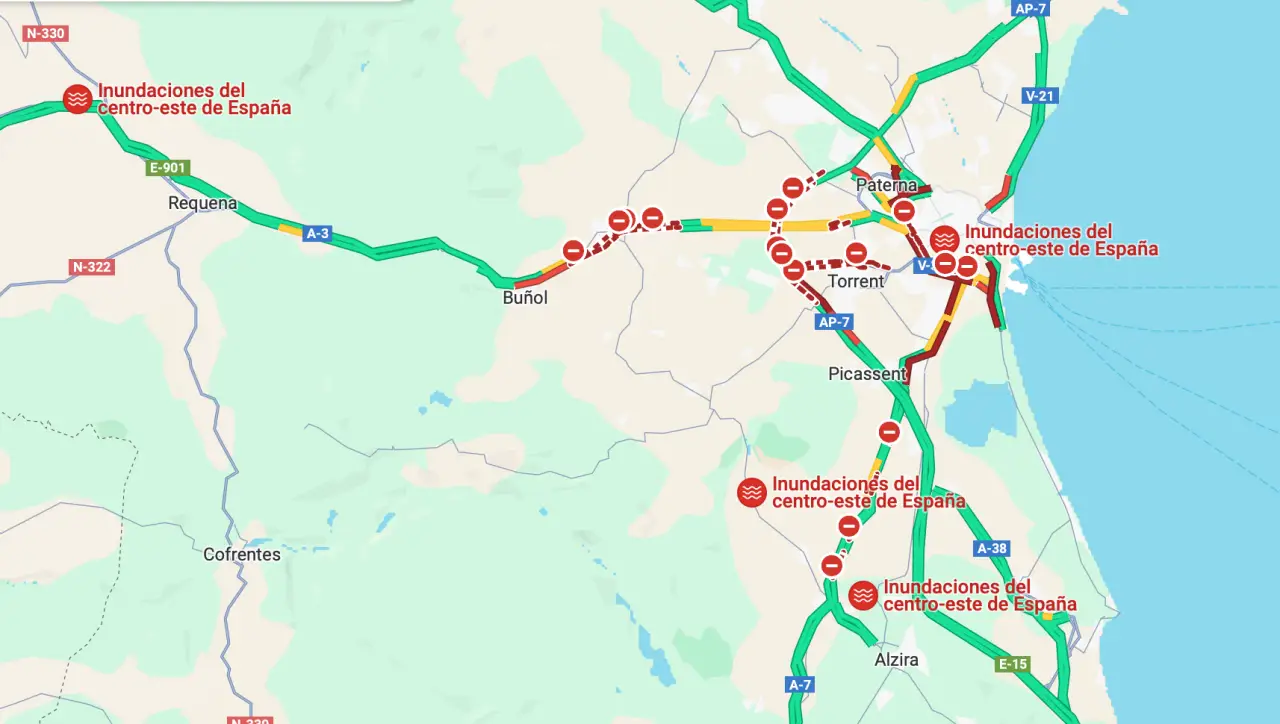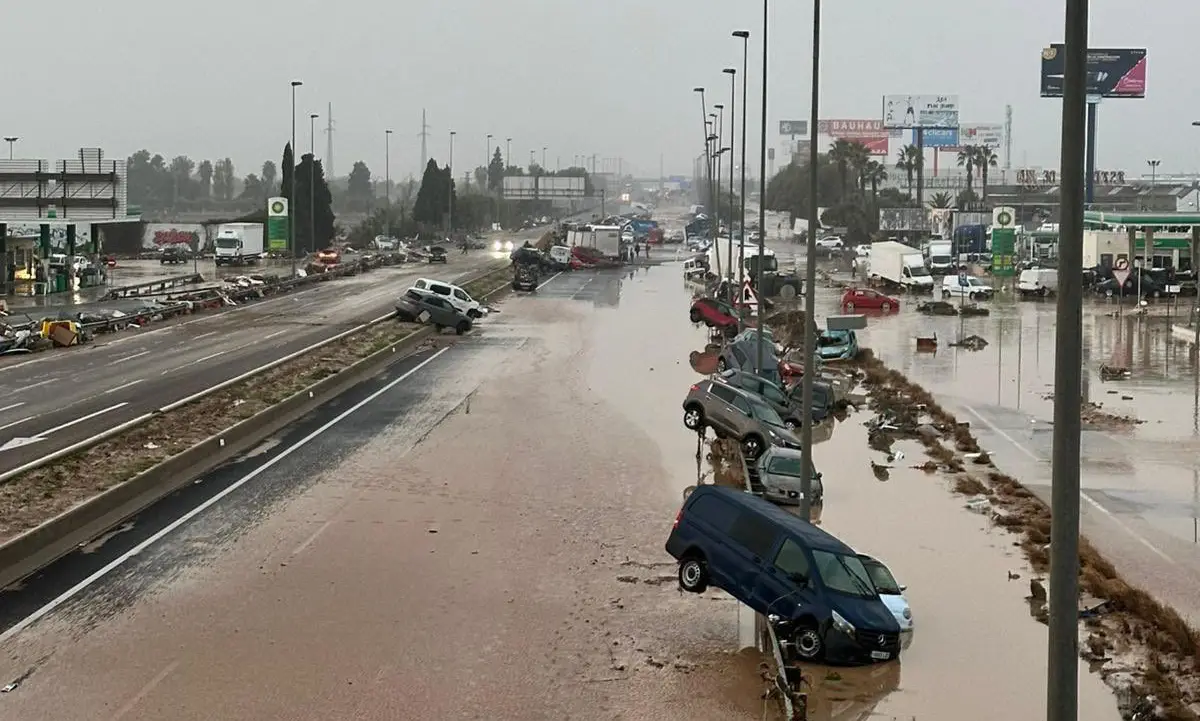The General Directorate of Traffic (DGT) has urged citizens to avoid traveling to the province of Valencia during the All Saints’ Day long weekend, as numerous roads remain closed due to severe flooding.
The recent storm, classified as a DANA (isolated depression at high levels), has brought heavy rainfall, leaving several main and secondary roads impassable. DGT advises that any open lanes in affected areas will primarily serve emergency services and supply vehicles for essential goods.
In an effort to minimize risk, the DGT has sent a public alert to residents in the Valencia province, advising them to limit travel to essential journeys only. Current weather warnings indicate that the situation remains dangerous, with the State Meteorological Agency (Aemet) maintaining a red alert for rain in Castellón.
The DGT’s appeal for caution comes as emergency crews work tirelessly to clear roadways inundated with water, debris, and damaged vehicles. Affected highways include major routes such as the A-3 and A-7, both of which connect to Valencia and are crucial for regional transportation.
According to the DGT, these closures underscore the need for travelers across Spain to avoid unnecessary trips to Valencia until conditions improve.
Significant Disruptions on Major Routes
The DGT has confirmed that both the A-3 and A-7 highways remain closed at various points. This includes sections passing through towns such as Picassent, La Alcudia, Requena, Buñol, Paterna, Alzira, and Chiva. These routes, which are key access points to Valencia, have experienced significant disruptions, with numerous vehicles left stranded on the roads. The Mediterranean Motorway, particularly its connections to the A-3, is also affected, further complicating access to the region.
Efforts to clear these vital routes began on Wednesday, with authorities moving stranded vehicles to the side of the roads to facilitate cleanup. However, officials anticipate that the full clearance and reopening of these highways will take several days.
In addition to these main highways, around 70 secondary roads in Valencia are currently closed. The province of Castellón is similarly affected, with specific closures on roads such as the CV-130 between Albocasser and Tirig, the CV-137 in Càlig, the CV-1486 in El Borseral, and the CV-200 between Almedijar and Aín.
Heavy Rain Impacts Other Provinces
The adverse weather conditions have extended beyond Valencia, impacting regions across Spain. In Andalusia, 23 roads are affected by flooding and related issues, including 13 in Cádiz, seven in Seville, and three in Granada. Castilla-La Mancha is also facing challenges, with significant disruptions in Cuenca, particularly along the A-3 near Minglanilla and Atalaya de Cañavate, as well as the CM-215 in Landete. In Guadalajara, the GU-952 and GU-958 roads are also closed.
In Aragón, heavy rainfall has affected roads in Teruel and Zaragoza. Notably, closures in Teruel include the TE-28 in Blancas-Odón and the TE-V-6016 in Villaespesa. Zaragoza has four affected roads, including the A-202 in Monasterio de Piedra, the A-1506 in Virgen de Herrera and Herrera de los Navarros, the A-1105 between Pina de Ebro and Gelsa, and the A-1506 in Badules. Traffic on the N-2 national road between Pina de Ebro and Bujaraloz has also been hindered.
DGT Advises Travelers to Stay Informed
As the heavy rains continue, the DGT strongly recommends that anyone planning to travel in affected areas should monitor the latest updates. Travelers are encouraged to check real-time information on road conditions through DGT’s official Twitter accounts (@informacionDGT and @DGTes), local news bulletins, and radio broadcasts. The dedicated traffic portal also provides valuable resources for travelers seeking alternative routes or road status updates.
With additional rainfall expected, the DGT urges all travelers to take extra precautions, avoid flooded areas, and only undertake essential journeys. For those planning to travel during this episode of extreme weather, staying informed and flexible with travel plans is crucial to ensuring safety on the roads.



